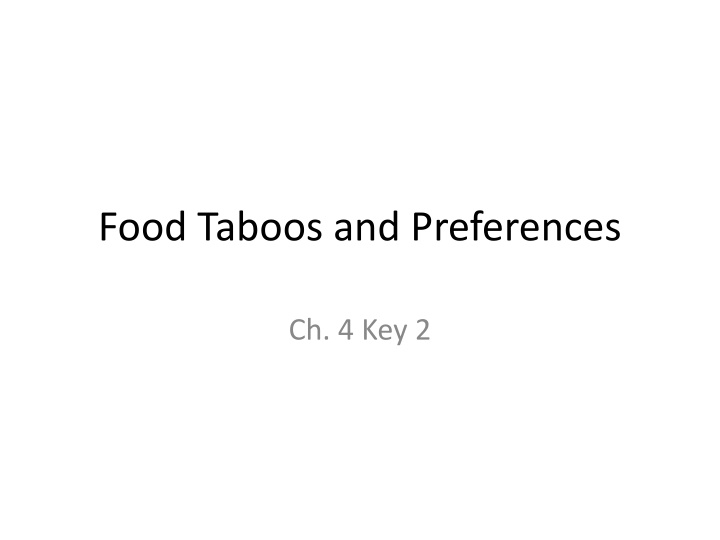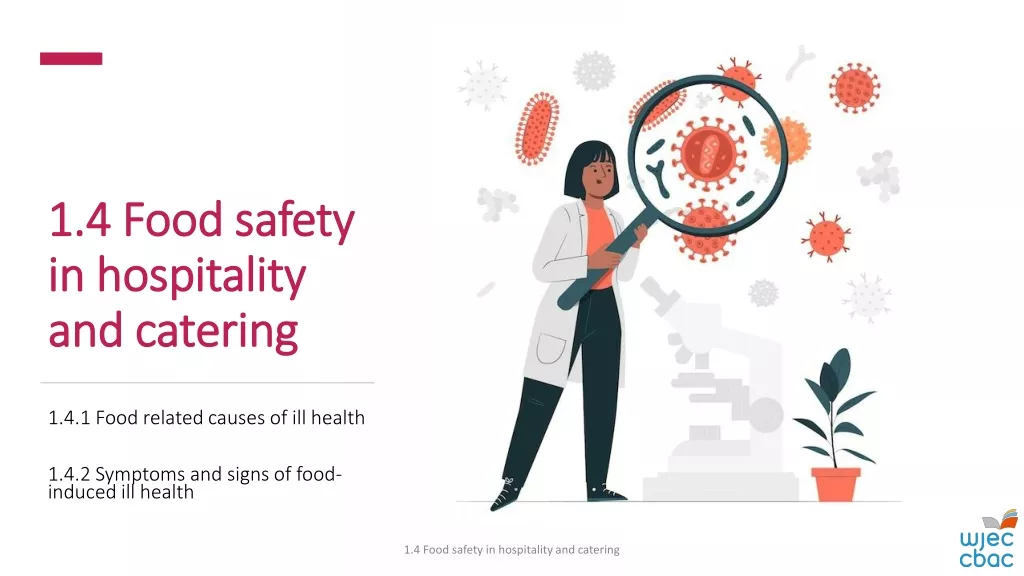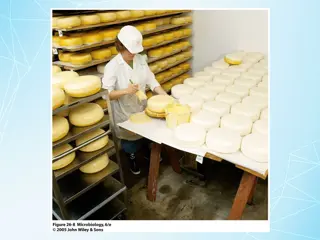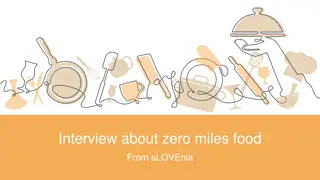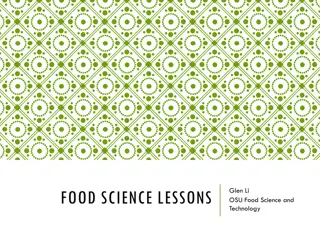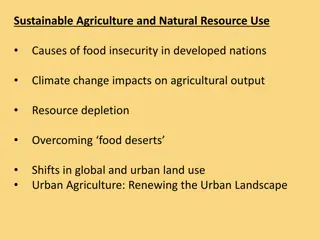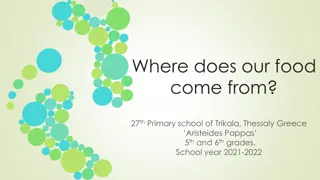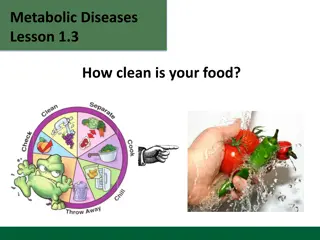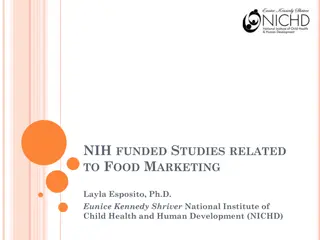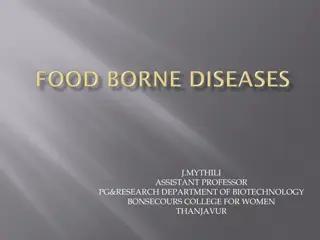Food Taboos and Preferences
Fascinating world of food taboos and preferences across different cultures, from food restrictions to well-known taboos like those surrounding pigs, cows, and dogs. Learn about the reasons behind these cultural practices and the impact they have on society. Discover how food preferences are shaped through enculturation and how they can change over time through borrowing and migration.
Download Presentation

Please find below an Image/Link to download the presentation.
The content on the website is provided AS IS for your information and personal use only. It may not be sold, licensed, or shared on other websites without obtaining consent from the author.If you encounter any issues during the download, it is possible that the publisher has removed the file from their server.
You are allowed to download the files provided on this website for personal or commercial use, subject to the condition that they are used lawfully. All files are the property of their respective owners.
The content on the website is provided AS IS for your information and personal use only. It may not be sold, licensed, or shared on other websites without obtaining consent from the author.
E N D
Presentation Transcript
Food Taboos and Preferences Ch. 4 Key 2
Food preferences Food preferences are acquired by enculturation o children learn both which foods are edible and which foods taste good All cultures have preferred foods, which constitute a subset of actual or possible food sources Subcultures can have preferred foods as well Food preferences can change through borrowing, diffusion and migration o Example: pasta originated in China, sushi bars are popular in the US Feasting foods are eaten on special occasions Famine food are resources that are considered edible but not eaten unless preferred foods are scarce o Examples: ?
Food restrictions Cultures differ in what is considered edible Food restrictions are not dependent on nutritional value In some cases scarce resources in the environment are restricted, in others not Food restrictions apply to both plant and animal resources Some foods are restricted to subsets of individuals o can depend on clan affiliation, age, gender, pregnancy, status There is a continuum between food restrictions and food taboos
Food taboos The consequences of breaking a food taboo are harsher than for breaking a food restriction There are two types of food taboos 1. applies to all individuals of a culture 2. applies to a subset of individuals in a culture Most food taboos apply to animal resources
Most well known food taboos Pigs not eaten by Muslims, Jews, Ethiopian Orthodox Christians Cows not eaten by Hindus Dogs not eaten in Western world and many other cultures Carnivores eaten in few cultures Almost universal taboo against eating humans More restricted food taboos Can be restricted to culture or to subset of individuals in a culture Examples of applying to whole culture o blood products (US) o fish (Cushitic cultures- Horn of Africa, Tanzania, Kenya, Sudan and Egypt. o deer (many Amazonian cultures)
Reasons for food taboos Early anthropologists - quirk of culture Environment - not suitable for area or scarce Medical reasons - unhealthy Economic reasons - more value alive Symbolic reasons - unnatural Social reasons - to increase cohesion or reinforce differences
Milk Preferred food among some cultures Restricted to young children among other cultures Sent as food aid to developing countries after WWII o many people got sick o at first interpreted as due to using the powdered milk wrong o then lactose intolerance was discovered Adult lactose intolerance o among adults in Asia and West Africa, Europe and North America Lactose tolerance o Europe (north of the alps), Northern India, pastoral groups
Cows Preferred food in most cultures Harris argues that the products of living cows are important for Indian economy Womack - alternate view Aryans banned cattle sacrifice and established caste system outcastes unclean and can eat cattle Food taboo to reinforce status differences
Pigs Pigs preferred food in Scandinavia, China, Pacific Islands Medical explanation pigs wallow in their excrements to keep cool in hot and dry environments carry diseases (trichinosis) Therefore pigs are unclean and unhealthy and tabooed Marvin Harris ( Good to Eat 1985) argues for an economic adaptation Israelites cut down woodland for agriculture and destroyed natural forage for pigs pigs had to be fed grain thus competing with humans pigs were not useful for plowing, milk or wool Food taboo established because pigs were too costly Mary Douglas ( Purity and Danger 1966) argues for a symbolic reason all societies classify foods as unclean or clean some items are anomalous and treated as unclean clean, edible animals should have cloven hooves and chew cud pigs have cloven hooves but don t chew cud Tabooed because didn t fit into category
Dogs Dogs are preferred food in some Chinese and Pacific Island cultures Symbolic explanation people don t eat what is considered self, part of family or group dogs are seen as part of family, protects and give companionship Therefore there is a food taboo against eating dog in most cultures
Anti-Dogs Marvin Harris suggests the reason is economic dogs used for transport, hunting, protection, warmth, companionship services more valuable than meat in areas where other resources are abundant Therefore dogs will be eaten in cultures where their services are not needed and/or resources are scarce
Humans Cannibalism very rare Harner (American Anthropologist 4:117-35, 1977) argues a materialist perspective Aztecs sacrificed and ate large numbers of captives they had high populations and few domestic animals Therefore they ate humans to obtain protein Womack (Being Human 2001) suggests the reason was political the Aztecs had many political enemies Sacrifice provided a means to get rid of military rivals and extend their territory
